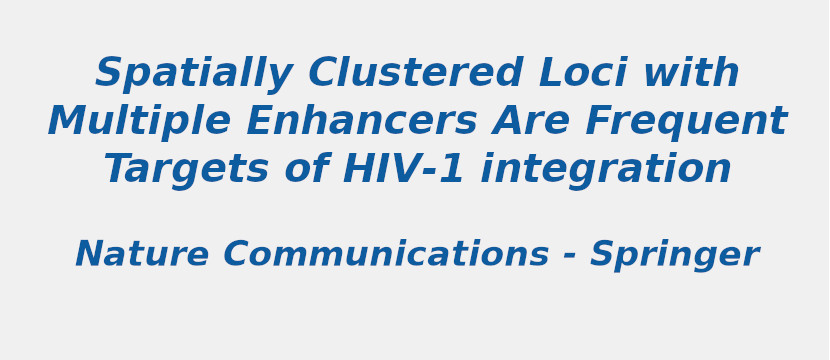Research Area: Machine Learning
HIV-1 recurrently targets active genes and integrates in the proximity of the nuclear pore compartment in CD4+ T cells. However, the genomic features of these genes and the relevance of their transcriptional activity for HIV-1 integration have so far remained unclear. Here we show that recurrently targeted genes are proximal to super-enhancer genomic elements and that they cluster in specific spatial compartments of the T cell nucleus. We further show that these gene clusters acquire their location during the activation of T cells. The clustering of these genes along with their transcriptional activity are the major determinants of HIV-1 integration in T cells. Our results provide evidence of the relevance of the spatial compartmentalization of the genome for HIV-1 integration, thus further strengthening the role of nuclear architecture in viral infection.
Keywords:
Chromatin structure
Computational biology and bioinformatics
Genetics
Nuclear organization
Retrovirus
Author(s) Name: Bojana Lucic, Heng-Chang Chen, Maja Kuzman, Eduard Zorita, Julia Wegner, Vera Minneker, Wei Wang, Raffaele Fronza, Stefanie Laufs, Manfred Schmidt, Ralph Stadhouders, Vassilis Roukos, Kristian Vlahovicek
Journal name: Nature Communications
Conferrence name:
Publisher name: Springer
DOI: 10.1038/s41467-019-12046-3
Volume Information:
